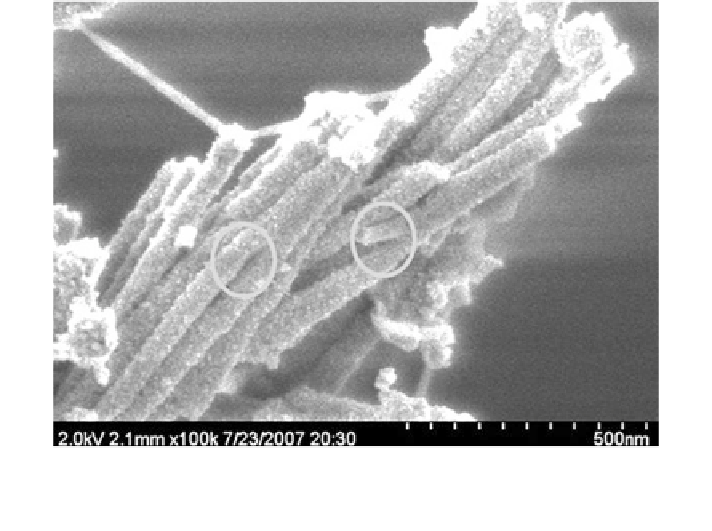Environmental Engineering Reference
In-Depth Information
Fig. 8 FESEM image of the Pt Y-junction prepared using hierarchically designed alumina
templates through electrodeposition (adapted from Ref. [
114
] with permission from American
Chemical Society)
the electric field which provides important advantages in terms of purity of the
systems (less surface contamination). This field induced growth facilitates flexi-
bility to achieve several anisotropic structures of platinum which are thermody-
namically not favourable. It is instructive to compare this approach with the
previously demonstrated route for the formation of multipods, where shape control
was achieved using surfactant/capping molecules. Even though most of the arms
have uniform width (ca. 100 nm), some of the branches are formed by the
assembly of nm-sized rods in contrast to the previous case.
In addition to the above-mentioned shapes, we have also demonstrated the
synthesis of discs and hexagons through a template-assisted electrodeposition using
PAM by merely tuning the deposition conditions [
113
]. Accordingly, the SEM
images in Fig.
7
a, b reveal the formation of discs with a diameter of ca. 2 mm,
whereas hexagons are formed with an edge length of 0.5-1 mm. The morphological
evolution of these structures as a function of the applied field is depicted in
Scheme
3
and, as discussed in the case of multipod formation, these structures are
also obtained without the assistance of any capping molecule/surfactants.
More intriguing shapes like the platinum Y-junction nanostructure has also
been synthesized using hierarchically designed alumina templates through an
electrodeposition route [
114
]. The FESEM image of such a Pt Y-junction after
dissolving the membrane is shown in Fig.
8
to clearly reveal uniform Y-junctions
with well-defined branches and stems having diameters ca. 100 and 50 nm,
respectively. More interestingly, the angle between the branches is ca. 12 which

Search WWH ::

Custom Search